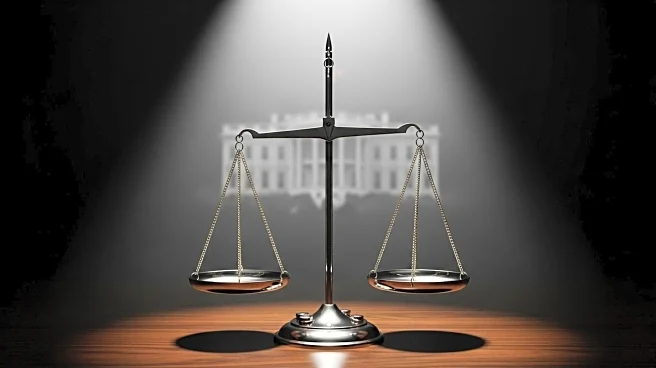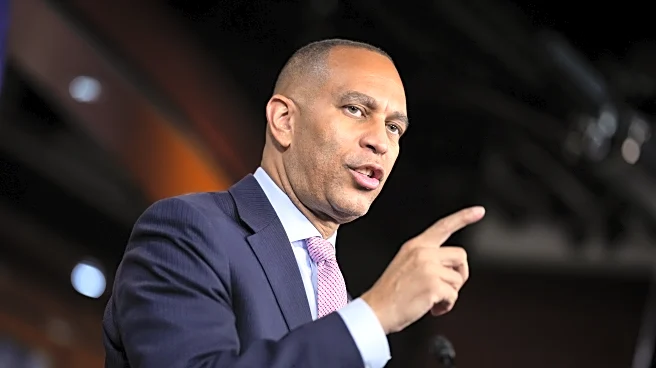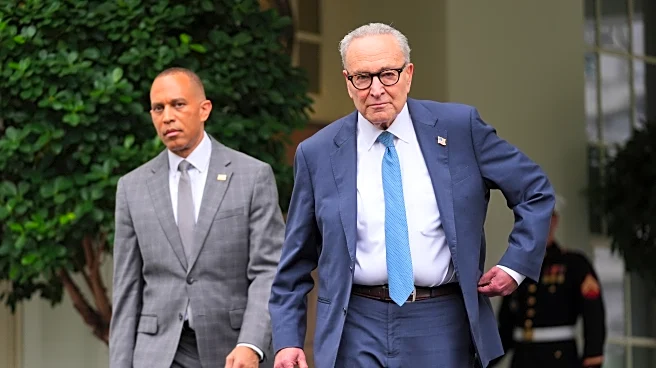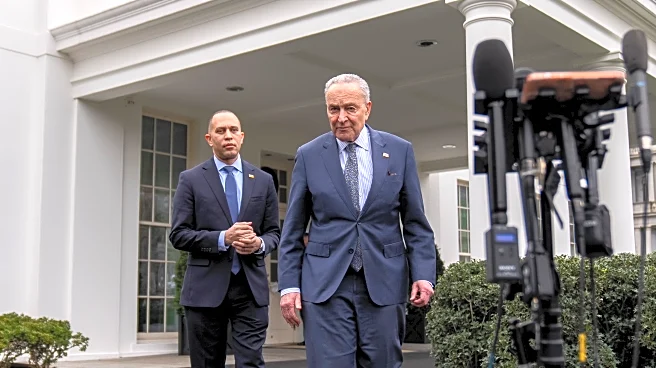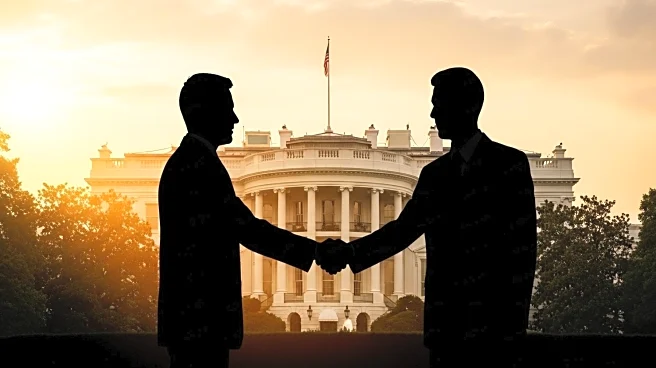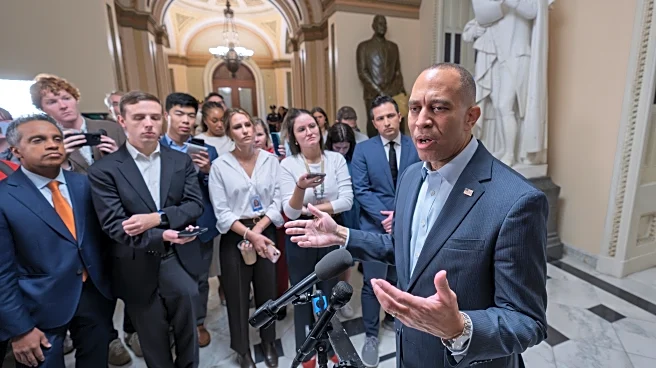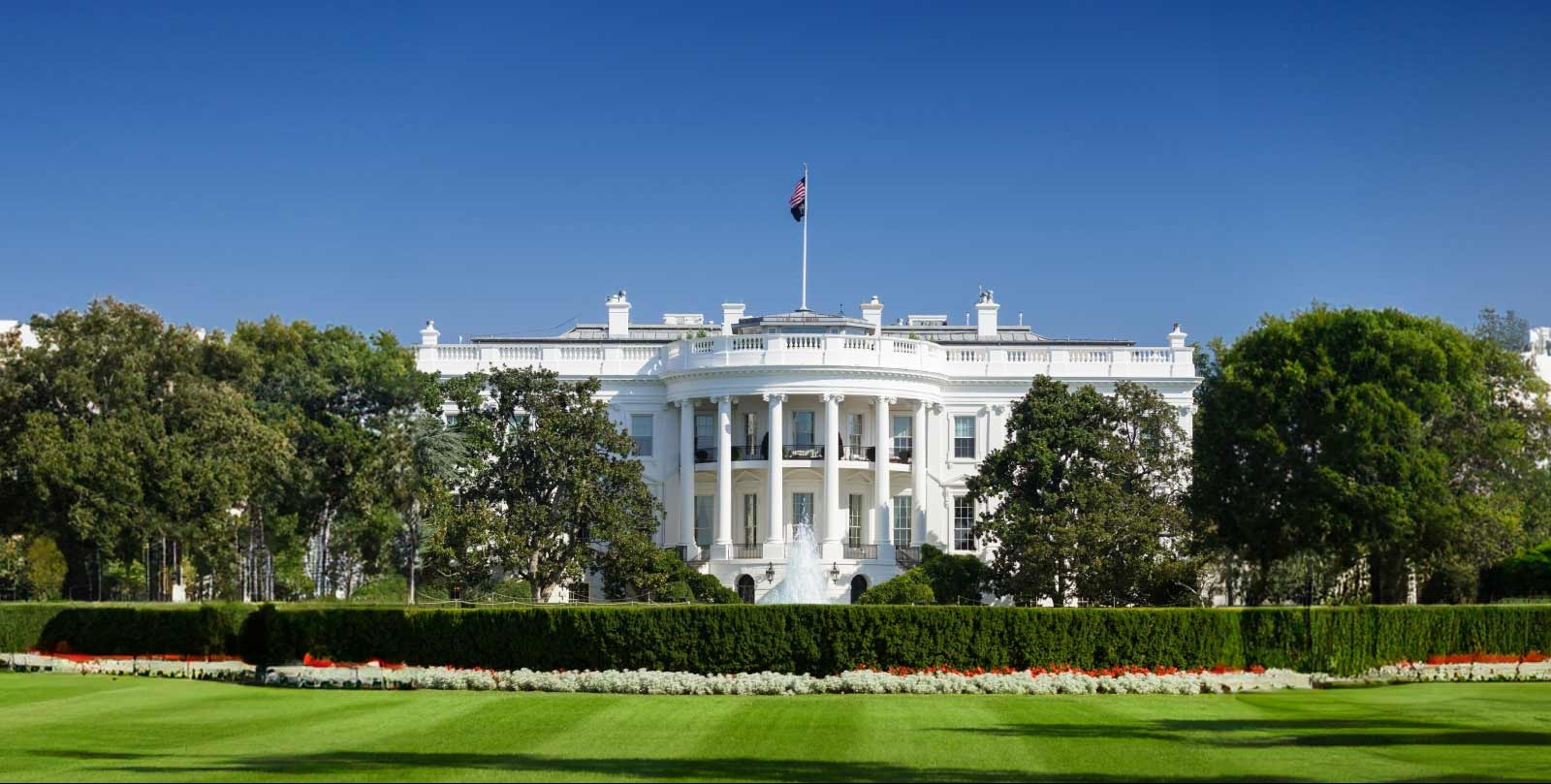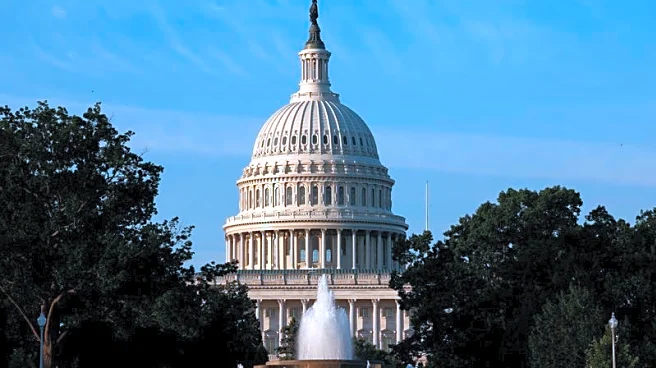What is the story about?
What's Happening?
The federal government is facing a potential shutdown as negotiations between President Trump and congressional leaders have failed to produce a funding agreement. Vice President JD Vance expressed concerns that Democrats are not willing to compromise, which could lead to a shutdown. Senate Minority Leader Chuck Schumer and House Minority Leader Hakeem Jeffries highlighted significant differences over healthcare program cuts as a major sticking point. The White House Office of Management and Budget Director Russ Vought has warned of mass layoffs for non-essential government employees if the shutdown occurs. The situation is reminiscent of the 2018-2019 shutdown, which lasted 35 days.
Why It's Important?
A government shutdown would halt non-essential operations, affecting federal employees and services nationwide. The threat of layoffs adds pressure on negotiations, potentially impacting public sector workers and their families. The shutdown could also influence public perception of the administration's ability to govern effectively, with political ramifications for both parties. Healthcare funding remains a contentious issue, with Democrats seeking to protect Affordable Care Act subsidies, while Republicans push for cuts. The outcome of these negotiations could set a precedent for future budget discussions and influence upcoming elections.
What's Next?
If no agreement is reached, the shutdown will commence at midnight on Tuesday. Both parties may face increased pressure from their bases, with Democrats advocating for healthcare funding and Republicans aiming to reduce spending. The political stakes are high, as each side seeks to avoid blame for the shutdown. Further negotiations are expected, with potential compromises on healthcare funding and budget allocations. The administration will need to manage the optics of a shutdown, balancing public service disruptions with fiscal responsibility.
Beyond the Headlines
The potential shutdown highlights deeper issues in U.S. governance, including partisan gridlock and the challenge of balancing budgetary constraints with public service needs. The threat of layoffs underscores the vulnerability of government employees in political disputes. Long-term, this situation may prompt discussions on reforming budget processes to prevent future shutdowns and ensure stable funding for essential services.
AI Generated Content
Do you find this article useful?
